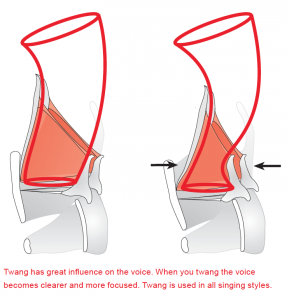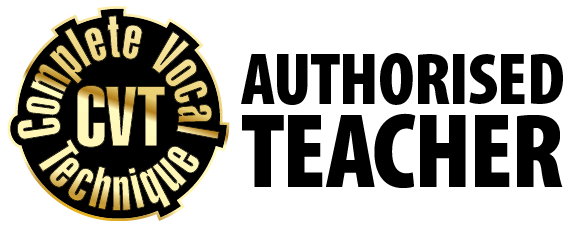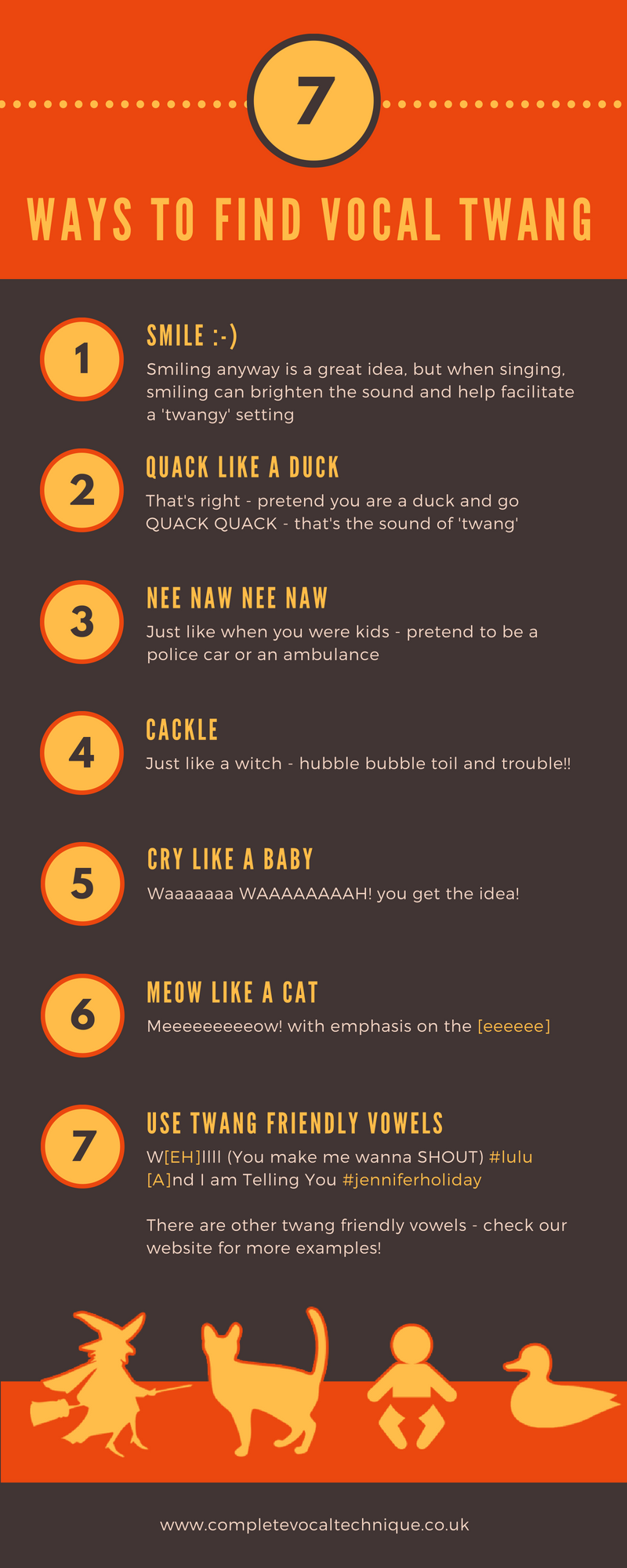TWANG! lET YOUR INNER DUCK OUT!
The word twang is used in a number of different ways: some people talk of the ‘Southern twang’ of some American accents; some would describe the sound of an electric guitar as ‘twangy’; others refer to is as a voice quality (Yanagisawa, Estill, 1989)
In recent scientific research, twang has been noted as an aryepiglottic constriction that could be advantageous in terms of vocal hygiene (Sundberg et al, 2010) and even a form of voice therapy (Lombard et al, 2007)
SO WHO IS RIGHT?
Well, all of them! Twang as a sound is the sharp, bright, carrying quality heard in, for example, the laugh of a cartoon witch, some Glaswegian or American accents, a duck, or even a screaming child. It can be more or less distinct, but it helps give ‘focus’ or ‘ring’ to a sound.
WHAT CAUSES TWANG TO HAPPEN?
Various studies have found that there is a narrowing above the vocal cords / vocal folds, often seen as the lower part of the epiglottis (the petiole) and the arytenoid cartilages approximating, creating a narrow funnel. You can see more on the CVT research site (links at the bottom of the page)
Other parts of the vocal tract can also be seen narrowing and the larynx often rises. Think of a water hose: if you narrow the nozzle where the water comes out, the water will shoot out faster. For the vocal cords, this means more output for less input, the vocal cords can do less work, but the sound that comes through the narrow ‘hose’ will be focused and powerful.

Image copyright Cathrine Sadolin, Complete Vocal Institute
DISTINCT TWANG
Distinct Twang could be likened to a distinctly narrow funnel; this will make the sound very sharp and piercing.
Depending on the mode and sound colour used, this could sound like anything from the Bee Gees (very twanged Neutral) to Chaka Khan (distinctly twanged Edge) or even Placido Domingo (distinctly twanged overdrive and Edge with a classical sound colour)
necessary twang
In CVT Terms, we distinguish between ‘necessary twang’ (clear, unhindered notes + correct technique), and ‘distinct twang’ to obtain a sharper character and lighter sound colour.
We can make less twang, but CVT research has shown that a necessary amount of twang will always be present. What is necessary? The minimum amount needed to make a clear, focused sound.
why is twang good?
Twang executed ‘correctly’ can help ease vocal strain and protect your vocal folds (vocal cords). Twang used as a technique for performance can help singers reach both higher and lower notes with more power and volume due to that funnel and hose analogy above. You can also think about an old gramophone or a brass instrument, the horn shape amplifies the sound created when the air passes through the tube.
CAN TWANG BE BAD?
Overtwanging (or over anything) can lead to tensions elsewhere so as with any use of mechanism, you can over do it. If anything feels uncomfortable, then stop doing it!
Singing is such a personal experience that only you know when something is not right for you, but don’t be afraid of the sounds that twang can make, just take care of the sensations you experience when using it.
If you are able to put twang on and take it off again, you are likely to have more control but as always remember that anything that triggers uncontrolled constrictions is not going to be great for your voice long term so find what works for you.
How do you find twang?
In practice, it is often easier to find distinct and necessary by going to a more obvious and exaggerated version first. Here’s a 60 second singing tip on what is vocal twang and how to find it
7 ways to find vocal twang checklist
The Nerdy Research Part
If you like a little more science – here are the links to the articles referred to above as well as other resources you may find interesting.

Great SINGING is a click away
Authorized CVT teachers spend a minimum of 3 years at the Complete Vocal Institute in Copenhagen in order to be able to teach the Complete vocal Technique. There are currently on 5 authorised teachers in the UK
sing! sing! sing!
Weekdays
BY APPOINTMENT
Weekends
BY APPOINTMENT

